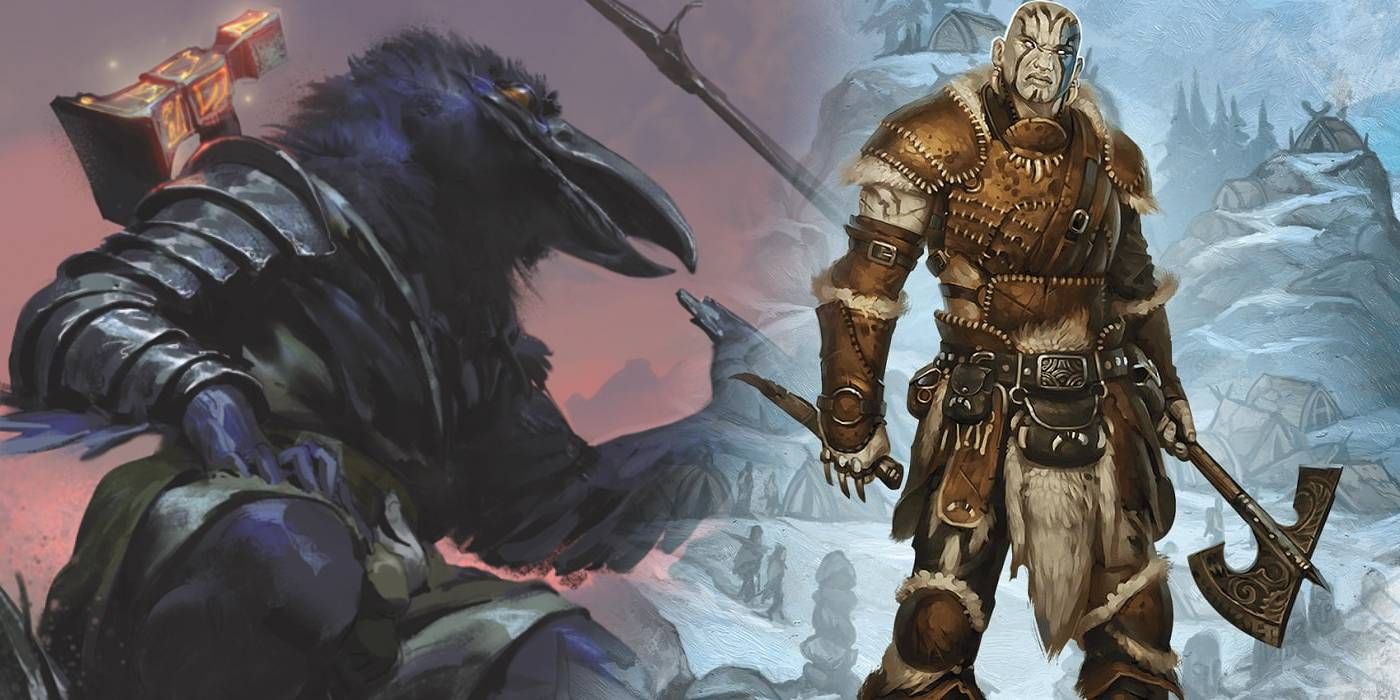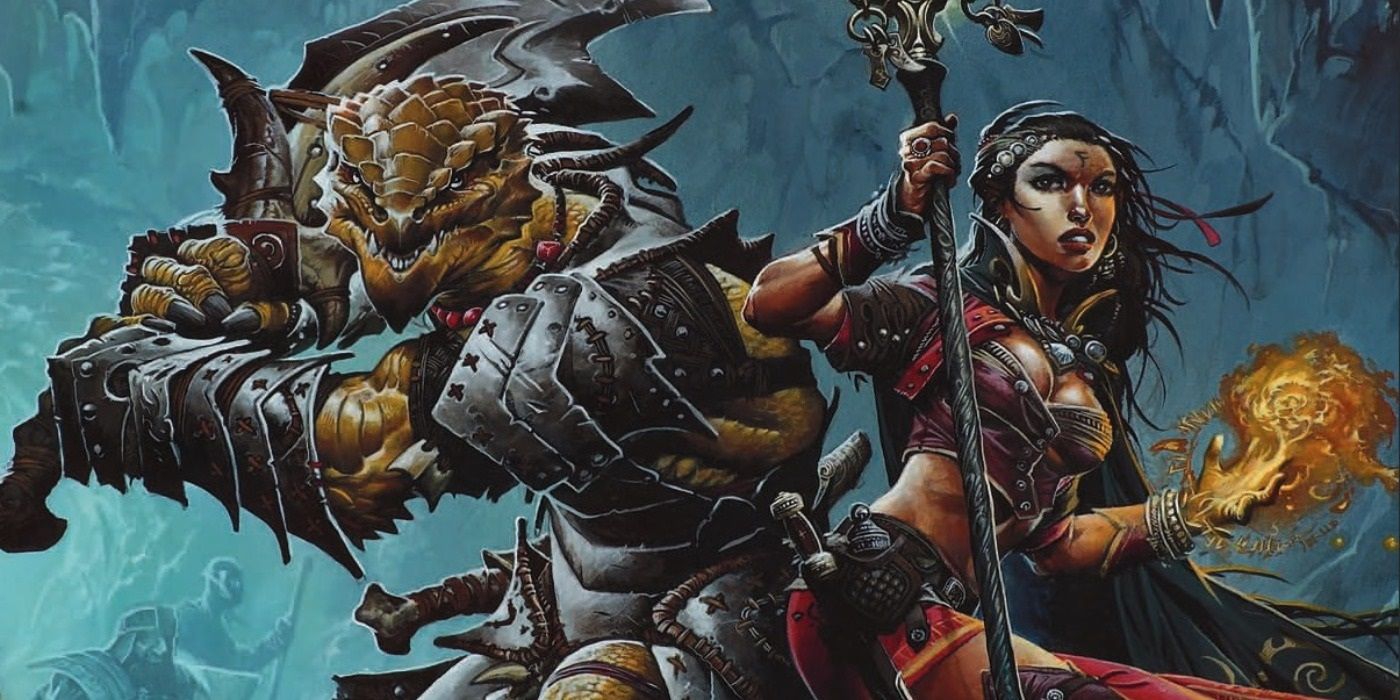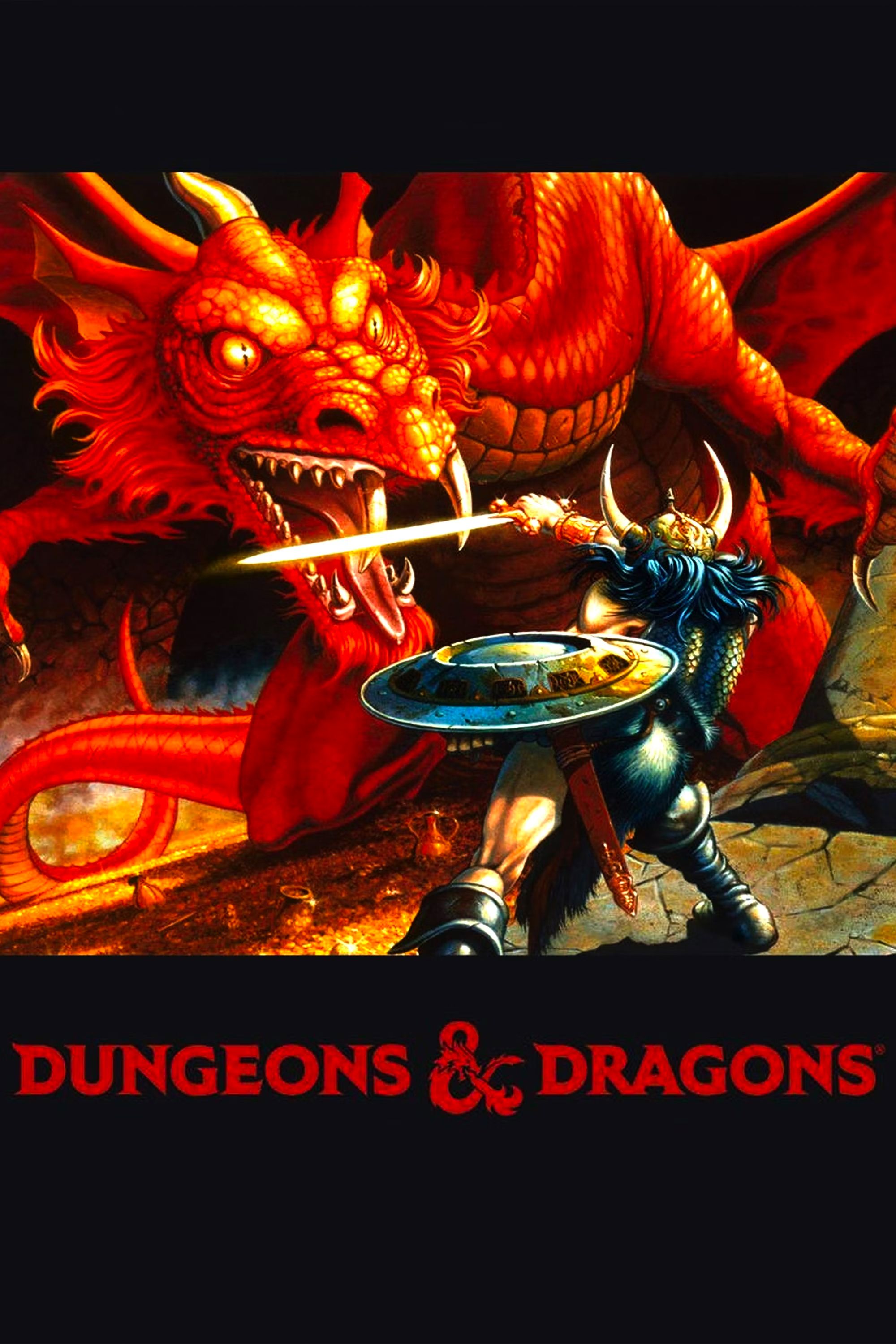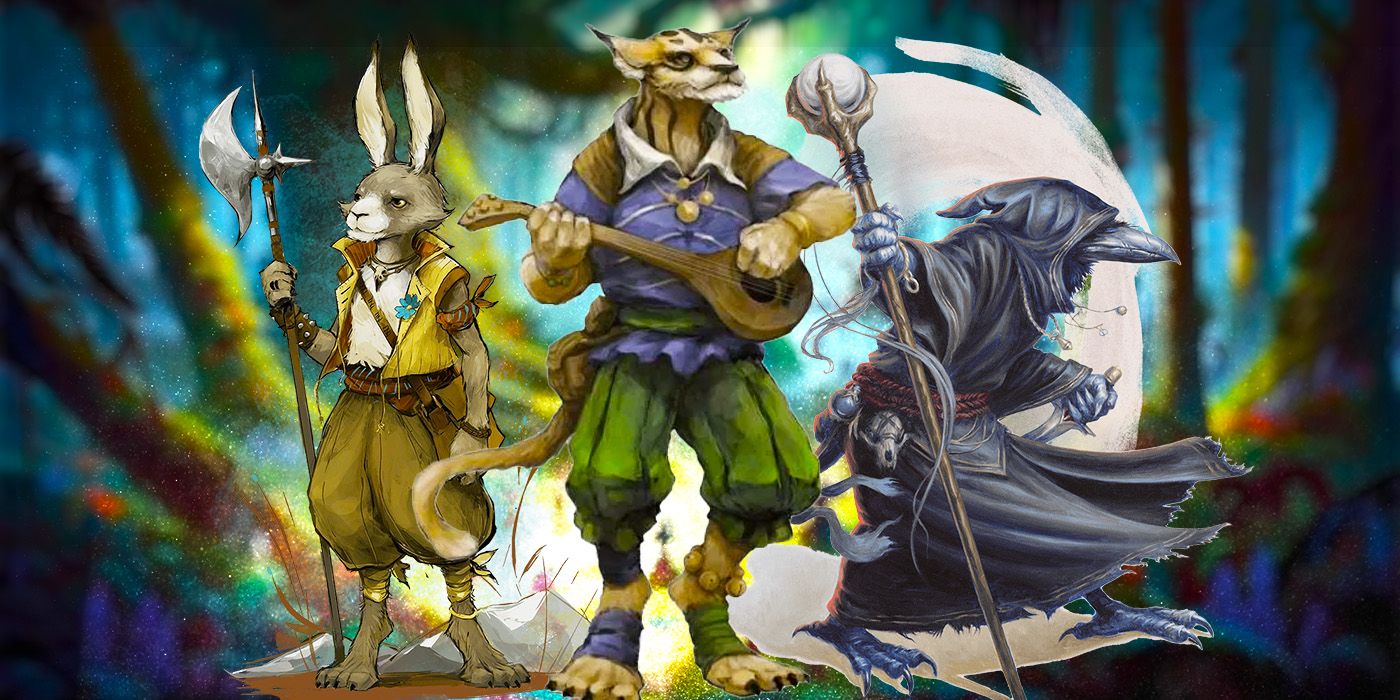Summary
- D&D 5e has diverse playable races inspired by animals, offering a range of options for players.
- Changes in the ruleset allow for more freedom in character creation and role-playing choices.
- Different animal races like tabaxi, leonin, and tortles offer unique abilities and playstyles.
The Dungeons & Dragons 5e ruleset has an abundance of playable races for players to choose from, many of which are based on real-world animals. It's not difficult for characters to transform into animals, as this is the point of the druid's Wild Shape ability in DnD, and there are different spells that allow the player to shift form. But there are also plenty of options for playing an animal the whole time. It just depends on whether a player wants to spend the entire game playing as a rabbit or a cat with a sword.
One major change in D&D 5e that has happened over time concerns the way in which playable races work. The fact that Tasha's Cauldron of Everything dropped racial stat bonuses meant that there was a lot less pressure to play specific builds, making it easier for players to create the characters they want to play. A lot of the monstrous races have also been updated, making them more viable as character options. This means that any race/class build is now viable, including the animal races.

10 D&D Races We Want To See In Paramount's Show (That Weren't In Honor Among Thieves)
Paramount+ has a wealth of humanoid races to choose from when it comes time to fill out the cast of their upcoming Dungeons & Dragons show.There are lots of playable races in D&D that are based on real-world animals, but there are lots based on fictional animals, too. The following list won't include races from Unearthed Arcana, shapeshifters, or Greek mythology-inspired creatures like satyrs and minotaurs, which, while technically inspired by goats and bulls, are bizarre animal/human hybrids that don't quite fit the theme. But even without these, there are still plenty of animal races for players to choose from should they wish to walk on the wild side.
12 D&D's Tabaxi Are Based On House Cats & Jaguars
From Monsters Of The Multiverse
In DnD, the human and humanoid races have many gods to call their own, some of which govern regular animals. There are some animals that have protector deities of their own, and all felines fall under the banner of the Cat Lord. It's said that the Cat Lord created a race called the tabaxi, which are humanoid cats who commonly resemble jaguars and house cats, though they can resemble any kind of feline.
Although this race debuted in Volo's Guide to Monsters, the most recent version of the tabaxi appeared in Mordenkainen Presents: Monsters of the Multiverse. They have a number of abilities that reflect their feline agility: their climbing speed is the same as their walking speed, they have natural claw weapons, they can see in the dark with darkvision, and they can perform bursts of speed.
11 D&D's Leonin Are Based On Lions & Tigers
From Mythic Odysseys Of Theros
Inspired by the myths of Ancient Greece, Mythic Odysseys of Theros details a plane unlike any other. It's here that the leonin are found, specifically in the lands of Oreskos, where they guard the massive pride lands they call home. A few leonin do leave their homeland and become adventurers, whereupon they can be used as playable characters.
The leonin are specifically humanoid lions and tigers, which means they differ from the smaller tabaxi in a number of ways. Their bonuses are better suited to more athletic builds, like paladins or monks. The version of leonin in Mythic Odysseys of Theros has a walking speed of 35 feet, 60 feet of darkvision, a natural claw weapon, and the mighty Daunting Roar attack that can inflict the frightened condition on enemies.
10 D&D's Harengon Are Based On Rabbits & Hares
From Monsters Of The Multiverse
The Feywild is home to all manner of whimsical beings, as it's where the fey originate from. A Feywild-set campaign called The Wild Beyond the Witchlight introduced two new races, including harengons, which are humanoid rabbits and hares. In lore, harengons are closely associated with travel, sometimes leaving the Feywild to explore other planes. However, they hang on to a little bit of fey luck even when they travel far from home. They're known to be worldly and energetic, and are well suited to Dexterity-based classes like monks and rogues.
Harengons originally had proficiency in Perception, but that ability was changed in the updated version of harengons included in Mordenkainen Presents: Monsters of the Multiverse. Now, harengons can hop without provoking attacks of opportunity, gain proficiency on initiative rolls (with an ability punnily known as Hare-Trigger), and add 1d4 to Dexterity saving throws, in order to demonstrate their great agility and perception skills.
9 D&D's Lizardfolk Are Based On Reptiles
From Monsters of the Multiverse
There are races in D&D that are descended from dragons, such as the dragonborn and kobolds, while some were created to have snake-like elements through magic rituals, such as the yuan-ti purebloods. The lizardfolk are neither of these, as they are inspired by real-world reptiles, and they're one of the oldest races on the Prime Material Plane. They can be found hanging out in swamps or jungles all over the campaign worlds, where they generally keep to themselves and don't interfere with the lives of the warm-blooded humanoids.
The most recent version of the lizardfolk appeared as a new playable race in Monsters of the Multiverse, where they are skilled swimmers, possess a deadly bite, can hold their breath for fifteen minutes, and have scaly skin that acts like armor. Thanks to their natural armor, they work well in unarmored classes like druid, ranger, and cleric.
8 D&D's Loxodons Are Based On Elephants
From Guildmaster's Guide To Ravnica
D&D and Magic: The Gathering are both owned by Wizards of the Coast, but it took years for the two to cross over in any meaningful way. There are now several Magic: The Gathering sourcebooks for DnD that bring concepts from the card game into the tabletop game. The first of these sourcebooks was Guildmasters' Guide To Ravnica, which introduced the loxodon to DnD.
Loxodons are humanoid elephants with an incredible talent for stonemasonry. In Guildmasters' Guide To Ravnica, the loxodon can carry weight as if they were a size category higher than they are, have advantage on saving throws against being charmed or frightened, have a natural AC of 12, and can use their trunk to perform simple tasks, including making an unarmed strike against a foe.
7 D&D's Tortles Are Based On Turtles
From The Tortle Package
Anyone who wishes to create a teenage mutant ninja, but is struggling to think of a playable race for the character can't go wrong with a tortle. The tortles are a race of humanoid turtles, with a massive protective shell on their back, which (oddly) doesn't slow them down. Somewhat ironically, tortles have a bang-average base speed of 30 feet.
The recent version of the tortle in Monsters of the Multiverse has a natural claw weapon, the ability to hold their breath for an hour, a natural AC of 17, and they can hide in their shell for a further +4 bonus to AC. This makes them an ideal choice for a DnD spellcaster, as they never need to worry about wearing armor. Since their speed is unaffected by their shells, they can also work as monks.
6 D&D's Aarakocra Are Based On Birds
From Elemental Evil Player's Companion
The bird-based aarakocra originally hail from the Elemental Plane of Air, though they can be found in the wild in many DnD campaign settings, such as the jungle of Chult in the Forgotten Realms. These are bird people who most commonly resemble eagles or parrots, though they can resemble any bird. Aarakocra can take the form of craven vultures, noble peacocks, or even cocky pigeons.
The more recent version of aarakocra in Monsters of the Multiverse gave them flying speed equal to their walking speed, natural talon weapons, and the ability to cast gust of wind at level three. While they make plenty of sense as paladins fiercely defensive of their territory, or barbarians easily provoked into a rage, they're limited to light armor if they wish to use their flying speed.
5 D&D's Owlin Are Based On Owls
From Strixhaven: A Curriculum Of Chaos
In another crossover with Magic: The Gathering, Strixhaven: A Curriculum of Chaos, an owl-like race called the owlin was introduced to DnD. In DnD lore, the owlin are descended from giant owls that resided on the Feywild, and they were transformed into humanoids by the chaotic magic of that realm. Fleet of foot and light of feather, owlin find it very easy to sneak around.
The version of owlin in Strixhaven: A Curriculum of Chaos has flying speed equal to walking speed (but only in light or no armor), proficiency with the Stealth skill, and a whopping 120ft of darkvision. That makes them excellent rogues, able to fly up on their enemies without being noticed, but they can work well in any unarmored or lightly armored class.
4 D&D's Kenku Are Based On Crows & Ravens
From Monsters Of The Multiverse
Keeping with the bird theme, there are also the kenku, who are humanoid ravens. The kenku lack the ability to fly, and while they're often known as tricksters and expert thieves, thanks to their uncanny knack for mimicry, there are many who take up different professions. While many of them are insecure about their race's unknown origins and their inability to fly, others consider their knack for learning and repetition a blessing.
The recent version of the kenku first appeared as a playable race in Monsters of the Multiverse. They are masters of duplicating handwriting, mimicking sounds, and remembering information. Since their racial bonuses are mostly social, they can work well as master manipulators, like bards or warlocks. They're also the only bird-based race not to lose any bonuses in heavy armor.
3 D&D's Yuan-Ti Are Based On Snakes
From Monsters Of The Multiverse
Yuan-ti have several visual characteristics associated with snakes, primarily cobras: they possess forked tongues, slithery tails, and scaly skin. They share a common lineage with all other reptilian species. However, it wouldn't always be apparent to look at them. There's a lot of biological variance in their serpentine features, depending on how much reptile is in their bloodlines. Some yuan-ti have full-blown snake heads, while others simply have narrow faces and green-tinted skin. Some even use their innate psionics to disguise their yuan-ti origins.
Although they're often stereotyped as deceptive, yuan-ti pride themselves on their cunning, which can serve any manner of cause. Owing to their innate spellcasting, magic resistance, and poison resistance, they work well in any class, but are especially suited to magically-inclined wizards, warlocks, or sorcerers.

Gary Gygax's Comic Inspirations for D&D Explain the Franchise's Dark Side
The legendary Appendix N explains the origins of Dungeons & Dragons, but Gary Gygax's comic book influences also point to the franchise's dark roots.2 D&D's Thri-Kreen Are Based On Grasshoppers
From Astral Adventurer's Guide
Thri-kreen also have a real-world basis, although they're technically inspired by insects (praying mantises, to be specific), not animals. Naturally camouflaged, innately psionic, and blindingly fast, thri-kreen are renowned for their hunting prowess. They may wield one or both of their race's traditional weapons: the gythka polearm or the chatkcha throwing stars.
Their most notable practical features are their four powerful arms, the smaller pair of which can even wield additional light weapons. This gives thri-kreen a lot of options in combat, allowing them to excel in Dexterity-based classes like monk and rogue. They can also communicate telepathically, change the color of their exoskeleton to blend in, and go without sleep perpetually. However, what they have in battle prowess, they lack in individuality; thri-kreen are not known for being personable.
1 D&D's Giff Are Based On Hippos
From Astral Adventurer's Guide
Probably the most recent animal-inspired race to be introduced to DnD 5e, the hippo-based giff debuted in Astral Adventurer’s Guide. They're consummate spacefarers, and live life by their rigid, naval chain of command. Giff culture has instilled in them a healthy fear of magic, except that which allows Spelljammer vessels to travel through space. Although some giff do learn magic, most of them rely on guns and polearms for self-defense.
Due to their innate connection to the Astral Plane, giff can add their Proficiency Bonus to damage rolls, dealing the equivalent amount of force damage. Their strong builds give them extra carrying capacity and advantage on Strength checks, while their cultural knowledge of firearms gives them a bevy of bonuses when wielding guns. As such, they make great rangers or fighters in Dungeons & Dragons.

Dungeons and Dragons
Dungeons and Dragons is a popular tabletop game originally invented in 1974 by Ernest Gary Gygax and David Arneson. The fantasy role-playing game brings together players for a campaign with various components, including abilities, races, character classes, monsters, and treasures. The game has drastically expanded since the '70s, with numerous updated box sets and expansions.
- Franchise
- Dungeons & Dragons
- Original Release Date
- 1974-00-00
- Publisher
- TSR Inc. , Wizards of the Coast
- Designer
- E. Gary Gygax , Dave Arneson
- Player Count
- 2-7 Players

